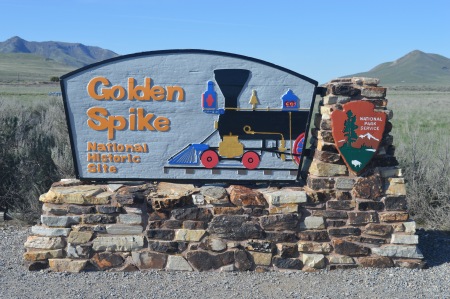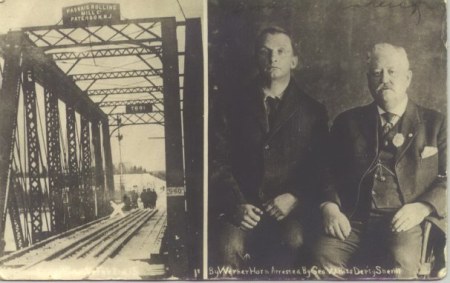Author’s Note: This is an important and large topic. For this reason I am presenting it in two parts.

Camp Funston military base in Kansas where first case documented in March 1918. Photo: original US Military now Public Domain
The misery of the Great War ended at the eleventh hour on the eleventh day of November 1918. Soldiers from Alberta trickled home with the last of them returning by late 1919. These servicemen wanted to come home and pick up their lives where they left off, but nature had other plans.
If you tour older cemeteries in Alberta you will notice in the period from 1918 to 1920 many graves are of young persons. Once you realize this was the time of the great influenza pandemic, these names shout out the impact to the reader of the inscriptions on the silent stones.
In the summer of 1918 influenza ravaged the world with the Spanish Flu. The society of 1918 had no vaccines for influenza, or any other disease for that matter. Influenza is incurable even in the 21st century. The impact on the Province of Alberta and the world was unimaginable. An estimated 20 to 40 million people died of the Spanish Flu worldwide. People could be healthy in the morning, sick by noon, and deceased by evening.
Health officials named this strain the “Spanish” Flu, not because it originated in that country, but because Spain was neutral during the period 1914 to 1918; better statistics and reports emanated from that country due to lack of censorship. Other countries repressed the true extent of the pandemic to maintain morale during wartime. More people died from the flu than soldiers killed in the war.
Symptoms included, severe headache, high fever; chills, aches, and pains in the back and limbs. The flu caused severe problems breathing because it attacked the lungs. Those who didn’t perish in the first few days died later of complications such as pneumonia. Persons between the ages of 20 and 40 were the most susceptible and the majority of the deaths occurred in this age group. To this day no one knows the reason for this.
In the early 1990’s Canadian scientists located several 1918 flu victims buried in a permafrost cemetery in Norway. Bits of viral RNA from their preserved flesh enabled scientists to reconstruct the virus. Scientists in a Winnipeg lab used tissues from First World War soldiers to restore the virus. All this research occurred in high security medical labs. The goal is to find a vaccine. So far they have been unsuccessful.
Influenza, like the common cold, has no known cure. Advice given by health authorities of the era included, wearing of masks to prevent the spread of the disease. Avoiding public gatherings, and public places like theatres and schools was encouraged. Health officials recommended patients drink lots of water, limit exposure to cold, and get lots of fresh air.
The Spanish Flu came in two distinct waves, first in the summer of 1918, and then the spring of 1919. Remarkably it disappeared as fast as it arrived.
Unknown to them, Canadian soldiers returning home brought the flu virus with them. By the end of the pandemic, an estimated 50,000 Canadians were dead out of a population of about 1,500,00 persons. Some smaller villages were almost wiped out. Alberta had a population of about 500,000 in 1918, over 4,300 Albertans died from the flu. In the United States 675,000 people died from the flu out of a population of around 7,000,000.
The flu terrified the populace of Alberta and the rest of Canada. Almost everyone who went outdoors wore a face mask. In fact on October 25, 1918 the government of Alberta ordered all citizens to wear a mask when they left their homes. Closed communities, like remote villages, were most vulnerable.

Alberta farmers wearing masks. Photo: Public Domain
Aboriginal communities were some of the hardest hit. The flu decimated the First Nation populations. Their settlements were small and close-knit enabling rapid spread of the disease. Many of them had not been previously exposed to influenza and thus were vulnerable. Medical care did not exist in the settlements, often they were left alone to suffer the ravages.
In Alberta gatherings of more than six people were banned. It was a criminal offence to shake hands. Public areas were closed. These included schools, theatres and any other public buildings or facilities. Throughout Canada hearses filled the streets. Hospitals were overflowing and doctors did not know what to do.
People tried everything and anything to defeat the flu. Some of the more exotic cures were smoked herrings worn around the neck, drinking alcohol, eating garlic, raw onions, drinking mixtures of hot milk, ginger and black pepper. Quarantine was implemented to no avail.
Antibiotics were not available to fight the secondary bacterial pneumonia. This compounded the impact of the flu and many deaths were from complications such as pneumonia.
The reason the Spanish Flu caused rapid death has only recently been explained. It seems this strain of influenza filled the lung tissue with liquid preventing oxygen from reaching the rest of the body.
The question for scientists is, could this happen today? The answer seems to be a resounding yes. Science today has technology to develop vaccines for various strains of influenza, but to date they have been unsuccessful in finding a vaccine for the Spanish Flu virus of 1918-1919. Might this virus reappear? There is no reason to think it could not.
Society in 2010 has several advantages over the society of 1918, better hygiene, and the ability, perhaps, to create a specific vaccine for the virus. In addition we have better medical technology and facilities. Lastly, antibiotics are available to battle bacterial complications such as pneumonia.
The impact to Alberta and society in general would be significant. People would still get sick, but it should be possible to minimize fatalities. Health authorities in Alberta and worldwide must remain vigilant.
Further Reading
Wikipedia – Pandemic Influenza History
Alberta in the 20th Century, Volume Four: The Great War and Its Consequences, Chapter Two by Stephani Keer, pp326-341, CanMedia Inc., 1995
Flu: The Story of the Great Influenza Pandemic of 1918, Gina Kolata, Simon & Shuster, New York, 1999
CBC News Online, 1918 Flu Epidemic, Dan Bjarnason and Robin Rowland, January 16, 2007
Pandemic, The Canadian Encyclopedia, Historica Foundation of Canada, 2009
A City Faces an Epidemic, McGinnis, J.P. Dickin, Alberta History, 24, No.4 (Autumn 1976, p.1-11
Alberta Formed, Alberta Transformed, Vol.2, 1919: A Year of Extraordinary Difficulty, Bright, David, University of Alberta Press, 2006






 Posted by stamperdad
Posted by stamperdad  Late April and early May saw a roadtrip to San Francisco to attend Westpex 2019 a national level stamp show held yearly. I use these trips to site-see along the way. I’m always looking for historical sites to take in.
Late April and early May saw a roadtrip to San Francisco to attend Westpex 2019 a national level stamp show held yearly. I use these trips to site-see along the way. I’m always looking for historical sites to take in.







